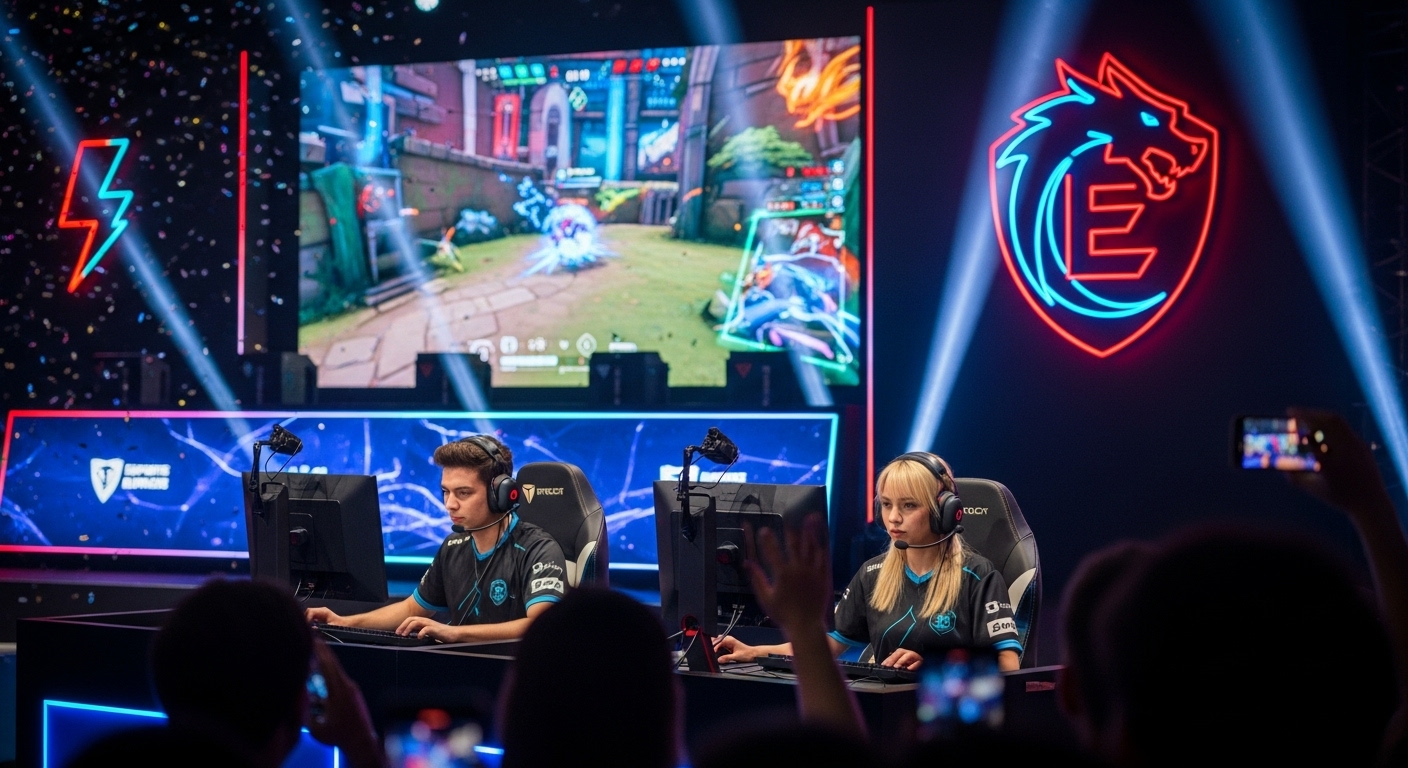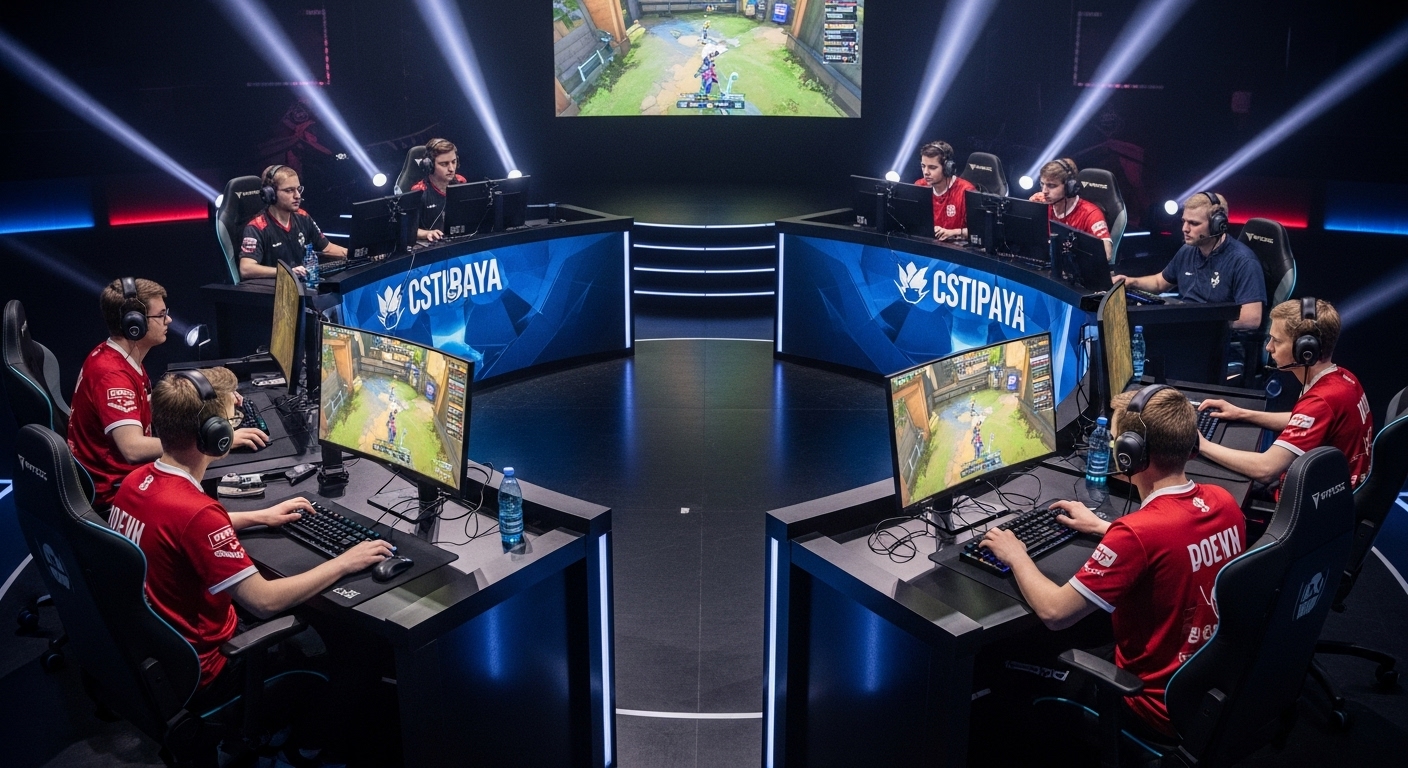Esports is no longer a mere buzzword in the gaming community; it has evolved into a dominant force in global entertainment. From humble beginnings as online tournaments between friends, esports now attracts millions of viewers, professional players, and lucrative sponsorships. This blog delves into the remarkable growth of esports, its impact on society, and what the future holds for competitive gaming.
What Is Esports?
Esports, short for electronic sports, refers to organized, multiplayer video game competitions. Unlike casual gaming, esports involves highly skilled, professional players or teams who compete in tournaments, often for substantial prize money. Games like League of Legends, Dota 2, Counter-Strike: Global Offensive, and Fortnite have become staples in the competitive gaming world, each with its own community, tournaments, and fan base. Esports has grown to be a professional career for many, complete with sponsorships, endorsements, and media deals that rival those seen in traditional sports.
The Rapid Growth of Esports
The rise of esports over the past decade has been nothing short of extraordinary. This growth can be attributed to several factors, including the proliferation of high-speed internet, the accessibility of gaming platforms, and the rise of streaming services like Twitch and YouTube Gaming. These platforms not only allow players to broadcast their matches to a global audience but also enable fans to engage directly with their favorite players and teams.
Esports tournaments now draw audiences in the millions, with the International Dota 2 Championship being one of the most-watched gaming events. Prize pools for major tournaments have surged into the millions of dollars, attracting top-tier talent from around the world. This has catapulted esports from a niche hobby into a multi-billion-dollar industry, supported by corporate sponsors, broadcasters, and advertisers.
The Structure of Esports
Esports operates as a multifaceted ecosystem that goes far beyond the players themselves. At its core, professional teams and players train rigorously for major events and leagues, much like athletes in traditional sports. Coaches, analysts, and psychologists play critical roles in helping players perform at their peak. Teams are often backed by large organizations, which provide funding, sponsorships, and media exposure.
The competitive scene is organized into leagues, tournaments, and events, many of which are streamed live to audiences around the world. Major esports titles such as League of Legends and Counter-Strike: Global Offensive host annual leagues that culminate in grand championships with massive cash prizes. This system is complemented by smaller, grassroots competitions, where up-and-coming players can prove their skills and rise through the ranks.
Esports and the Fans
One of the key components of esports’ success is its passionate fanbase. Esports fans are not just casual viewers; they are deeply invested in the outcome of matches, the careers of players, and the success of their favorite teams. This engagement often extends beyond watching tournaments; fans interact on social media, attend live events, and even create fan content, such as highlights, memes, and commentary.
Esports also provides a platform for socialization. Players from different corners of the globe can connect through online multiplayer games, forging friendships and rivalries that transcend geographical boundaries. The sense of community is a major driver of esports’ popularity, with fans often seeing themselves as part of the ecosystem, not just passive observers.
The Economic Impact of Esports
Esports is a multi-billion-dollar industry with a rapidly growing economic footprint. Revenue streams include tournament prize money, sponsorships, media rights, merchandise sales, and advertising. Companies from industries like technology, energy drinks, fast food, and automobiles have all found value in associating their brands with esports events. The sheer volume of online viewers has made esports an attractive advertising space, with targeted ads reaching a highly engaged and tech-savvy audience.
Salaries for professional gamers have risen significantly, with top players earning substantial incomes from tournament winnings, sponsorships, and streaming. In addition to players, coaches, analysts, and content creators are also carving out successful careers in esports, further contributing to its economic impact. The growth of esports has also led to job creation in fields like event management, broadcasting, and marketing.
The Challenges Facing Esports
Despite its rapid growth, esports faces several challenges. One of the biggest concerns is player burnout. Professional esports players often face grueling practice schedules, long hours, and intense pressure to perform at their best. This can lead to physical and mental fatigue, with some players retiring young due to the toll the profession takes on their well-being.
Another challenge is the lack of standardized regulations. Unlike traditional sports, esports has no universal governing body, which means rules can vary across tournaments and leagues. This inconsistency can cause confusion and controversy, especially when it comes to issues like match-fixing, cheating, and player contracts. As the industry matures, creating standardized regulations will be critical to ensuring fairness and sustainability.
Finally, diversity remains a key issue. While esports is a global community, it remains predominantly male-dominated. Efforts to encourage female players, streamers, and professionals in other roles are ongoing, but more work is needed to make esports a truly inclusive space. Inclusion and diversity will not only strengthen the industry but also make it more appealing to a wider range of fans and participants.
The Future of Esports
The future of esports looks incredibly promising. With continued technological advancements, including the rise of virtual reality (VR) and augmented reality (AR), esports is poised for even more immersive and engaging experiences. VR could revolutionize competitive gaming by allowing players to physically step into the game world, while AR could enhance the spectator experience by adding layers of information and interaction.
Esports may also continue to converge with traditional sports. Professional sports teams and organizations are increasingly investing in esports, forming their own teams and leagues. In the future, it’s not hard to imagine esports becoming part of the Olympic Games, with competitive gaming being recognized as a legitimate global sport. As esports expands into new regions, such as Africa and South America, its global reach will continue to grow, creating new opportunities for players, fans, and businesses alike.
Conclusion
Esports has come a long way from its humble beginnings as a pastime for gamers. Today, it is a thriving, billion-dollar industry that is reshaping how we view competition and entertainment. With a growing fanbase, rising revenue, and ever-evolving technology, esports is poised to continue its upward trajectory. Whether you’re a gamer, a fan, or someone looking to get involved in this exciting world, the future of esports is bright, and it’s only just beginning.




